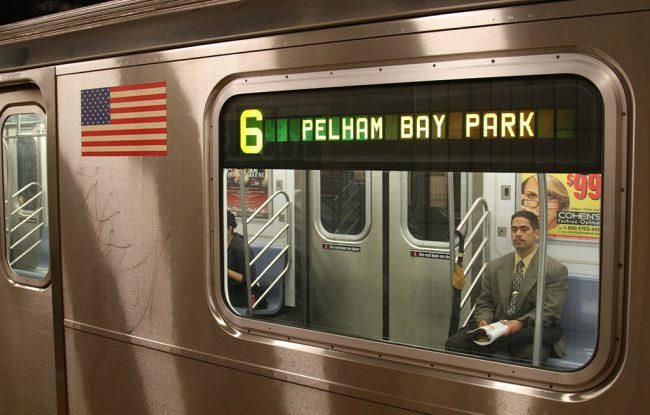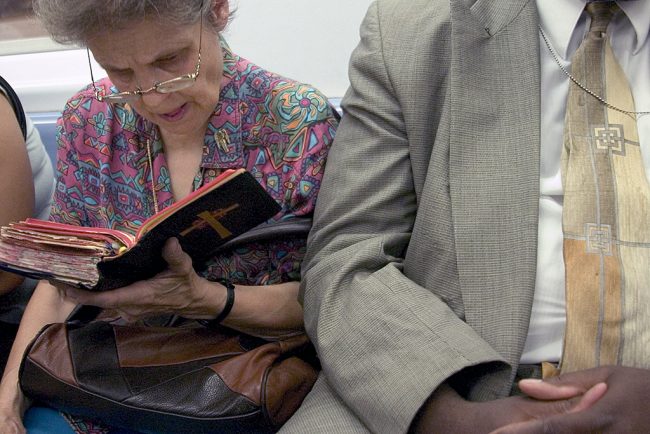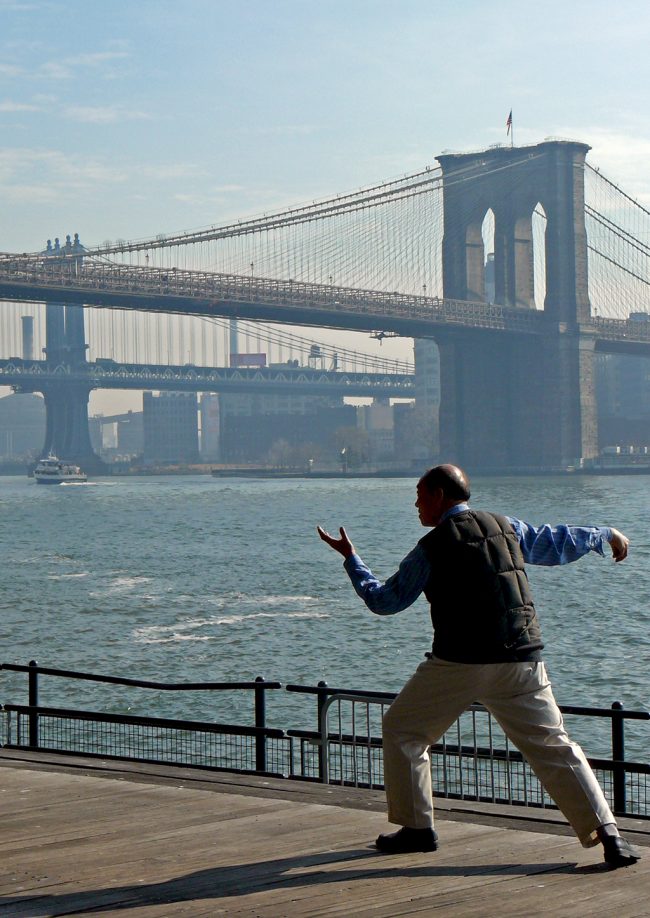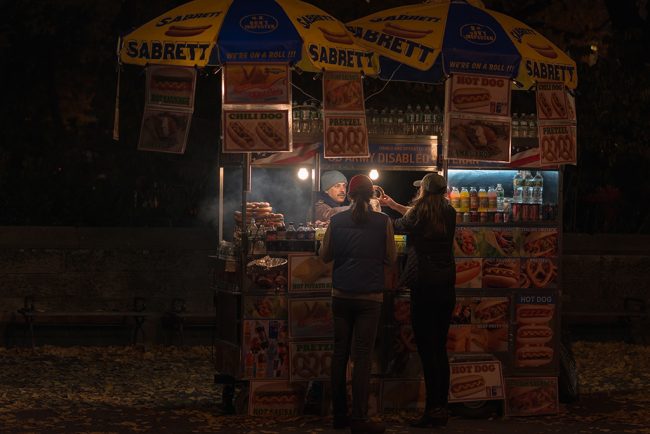
We are celebrating 15 years — and counting — of stories that are deeply researched and deeply felt, that build a historical record of what the city has been.
We are celebrating 15 years — and counting — of stories that are deeply researched and deeply felt, that build a historical record of what the city has been.
For this first time in the four-year history of the Urban Omnibus writing competition, our jury for As Seen On [ ] named an honorable mention, published here. Rishe Groner‘s personal essay on prayer as performance, and the implications of that confluence, uniquely captures the diversity of forms that secular and religious worship can take — and the transformation of place that can occur when a hymn is sung, or a simple “have a nice day” uttered.
Be sure to read the other winning essays on Urban Omnibus or in the print collection, currently on sale at Greenlight Bookstore and available online with a donation to UO. And for the full sensory experience, listen to readings of the winning pieces by five talented young actors. Groner’s piece, as an invocation of the sacred in New York’s seemingly mundane spaces, is especially well-suited to being read aloud.
–J.T.

Photo by Peter Daniel
She slides into the last available seat on the subway, exhaling with relief when the man to her left shifts his leg to avoid that extra bit of contact New Yorkers prefer to avoid. Pulling out the leather-bound volume, bent at the seams with use despite its thickness, she opens the crinkled pages and begins reading the foreign alphabet within.
She’s a sixty-something, scrubs-clad abuela, en route to her job in Midtown, murmuring the words of her Spanish-language Bible.
She’s the Hasidic girl from the depths of Brooklyn, riding to college and two teaching jobs while trying to squeeze in all the whispered prayers required in between.
She’s the thirty-something white woman clutching kale juice in one hand and iPhone in the other, tuned into a meditation podcast as she peruses an ancient Yoga text.
There’s a man yelling about Jesus, reminding us all that we can be saved, and as we avoid his gaze and Doctor Zizmor’s ghoulish grin above, we meet eyes and notice that what we’re all doing, whether by ancient book or smartphone, is praying. As the MTA apologizes for any inconvenience, the 6 train is rocking with prayer, and we’re all watching one another.

Photo by Al D.
We’ve exited the subway. In line to buy beer at the Mets game, there’s a circle of Jewish men, some clad in black hat and jacket, others with branded baseball caps, walking in circles and chanting in prayer as others nod on. A trio of adolescent boys clutching palm branches weave their way through the crowd of lunch-hour sunshine-seekers in Greeley Square and approach passersby outside Macy’s. A crawl of octogenarians practice tai chi at a Brooklyn Heights park; a motley mix of hippies, hipsters, and mystics meditate in Strawberry Fields; and a gaggle of college-aged women in long skirts bow their heads in thanks after Sunday brunch.
In New York, every minute of every day is a prayer. We walk the streets, we ride the subways, we sit in the parks, we buy a coffee from a street cart, we move out of the way of a stranger — and we are all praying.
As the public spaces grow, so does the prayer.
There’s the Muslim city worker pulling out his prayer rug in a Brooklyn parking lot for a quickie before heading inside to work, the suited woman muttering affirmations and psalms as she trudges up the steps to a job interview on Madison Avenue, and the school trips arriving at Bowling Green, outfitted with prayer books and song sheets as they join for Grace After Meals.
Sometimes, the prayer is apparent. Sometimes, less so.
Like the little girl twirling at the gate lounge of a tiny airport in the Antipodes, chanting an ancient line sung for thousands of years prior, now set to the tune of a popular nursery rhyme:
“May it be the will of the Merciful One, that we be returned to the service of our temple, in its place, speedily in our days, Amen, Selah.”
An old woman sitting nearby in the hard-backed gate chairs turns to the little girl. “Lovely song, dear,” she says with a smile.
The four-year-old is taken aback. Lovely song? This is a prayer. It’s not a performance. It’s the chant she sings each night before bed, and the chant that currently resides in her very impressionable, childish head, and the chant with which she hopes to entertain the travelers at Auckland Airport, even though she knows, she just knows, that it’s not a performance and most certainly a prayer.
Performance, defined: performing a piece of art before an audience, often rehearsed beforehand. If performance means there’s an audience, and the audience isn’t always God, then, she wonders, does it stop being a prayer?
Like the subway goers and sports spectators and street proselytizers, when does the utterance shift from “May it be your will” to “Lovely song, dear?”

Photo by Albert
“An eye that sees, and an ear that hears, and all that you do is written in a book,” states the second paragraph of a Hebrew song my classmates and I sang every morning before fourth-grade services. The song tried to teach the omnipresence of God, based on a phrase well-known to traditional Jews: “Know before whom you stand.”
I’ve prayed everywhere in the city, and stood before many. I’ve pulled out my prayer book for a formal service in the middle of Prospect Park; I’ve whispered wishes into the Hudson River as nearby grassy knolls reverberate with the sound of summer movies. I’ve stared furtively into my iPhone and mouthed the shapes of ancient words on the subway, all while watching Hasidic women recite psalms and avoid eye contact with a Bible-toting Jesus preacher a few seats down.
Are these actions single, solitary acts — selfish desires to connect with something higher than slush piles and elbowing strangers — or are they selfless ones, in which the performance of prayer ignites others to find a space within themselves amid the frenzy of Fulton Street’s escalators at rush hour?
I was also taught that the world is filled with divine sparks, there to be collected and reactivated through prayer in service of creating a better world. Perhaps this spiritual practice of my Hasidic youth is a physical job as well as spiritual one, a way to actually transform space through prayer like I’ve seen performance do.
I used to look at the stage of the small-town theater where my high school put on our annual play and marvel at its change over a few short days. The big, blue mats from our gymnasium became seas, lakes, ships, and palace floors — not just crash pads for dancers but a canvas for the story that unfolded.
Maybe our prayers — metaphorical spark collection as performance — create a similar effect even if we don’t reach the depths of ourselves or something divine. Maybe it’s just fine as a performance because of the ripple effects — the inspiration that’s created when we pray, that halo that descends on those who open their mouths and hearts to the higher powers of the universe, while others look on and try to catch the slipstream of heaven settling onto the 6 train platform.

Photo by DeShaun Craddock
New York, where every manhole is a brush with mortality and every wish an invocation to the vortex that governs everyday living, is a place of collective prayer. “In the eyes of many, we give glory,” the Psalmist says. This performance — received by an audience — transforms wants and needs into thanks and gratitude, elevates desires and intentions into asks and manifestations.
The good wishes to the cab driver as you stumble onto the curb.
The God Bless You of the Yemeni bodega boy making your midnight sandwich.
The Have A Nice Day of your favorite halal cart dude as he wraps your sandwich and sends you off into the day.
In New York, the prayer in front of the dollar slice transforms the concrete jungle.
Rishe Groner is a Madison Avenue exile — raised by Hasids and shaped by Aussie blokes — who now freelances in digital strategy and writing. She recently founded TheGene-Sis.com, a collection of music, prayer, poetry, and spiritual writing.
Can’t get enough? Listen to a rendition of an earlier version of the piece by actor Emily Stout from our January 13th reading of the winning essays at Greenlight Bookstore:
The views expressed here are those of the authors only and do not reflect the position of The Architectural League of New York.
Comments